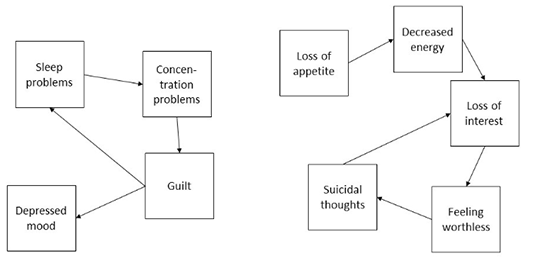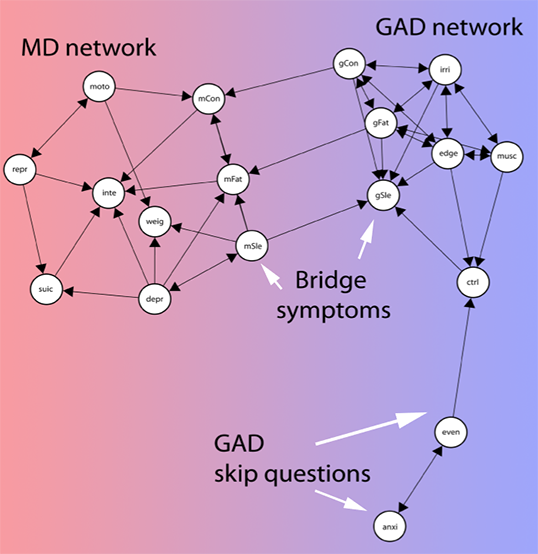[Content warning: psychiatric abuse (especially around borderline personality), rape, spoilers for Mount Misery]
I.
Last month I reviewed Samuel Shem’s House of God. The sequel, Mount Misery, is about his time training in psychiatry. This is obviously relevant to my interests, so I picked it up.
It’s weird to accuse someone of writing a cheap knockoff of their own book, but Mount Misery reads like a cheap House of God knockoff. There are all the same elements – a young doctor, an incompetent system, cruel hospital administrators, a kind mentor. But in the first book, it all came together perfectly. In this one, it was more hit-and-miss. Sometimes the imagery clicked; other times, it just seemed like caricatures. Creepy magical realism alternated with guys who announced “I hate patients! Let’s just pump them as full of drugs as possible and leave them to die!” and then zoomed away in fancy sports cars they bought with pharma money. Maybe it’s just less funny when it hits closer to home? I don’t know, but it was less funny.
The book’s frame story follows Dr. Roy Basch, who has left his abusive medical internship to do a psychiatric residency at the Mount Misery hospital, lured there by the kind and decent Dr. Ike White. But Dr. White commits suicide Basch’s first month of the job, the hospital administration ineptly covers it up, and nobody wants to talk about it – something something metaphor even psychiatrists stigma something metaphor. Having lost his mentor, Basch is thrown back and forth among various attendings – the one who thinks Freud solves everything, the one who thinks drugs solve everything, the one who thinks a thinly-veiled parody of Otto Kernberg solves everything, et cetera. The only sympathetic character is Dr. Malik, who tells Basch to ignore the theories and try to connect with his patients as human beings; Malik is of course loathed by all the other doctors and ostracized from all the good positions in the institution.
The typical psychiatric treatment in Mount Misery works as follows: Take someone who has some awful stuff going on in their life but is pretty much functional. Declare them to be a perfect example of whichever theory is popular that week (“this person clearly is obsessed with the idea of sucking their father’s penis”), then insult any underlings who don’t buy-in as being ignorami who refuse to understand the complexities of the human mind. Ignore all of the patient’s human needs in favor of the theory – if they complain that their room is cold, tell them that’s a reflection of the coldness of their father. If they protest that no, they’re really cold, then mark them as “resistant” and double-down on your theory since they obviously need a lot of help. The angrier the patient gets, the more you’ve obviously hit a nerve and the better a psychiatrist you are. Repeat the process until they are curled up in a ball, completely nonfunctional, which you will call “successfully regressing the patient” and “revealing the repressed pathology”. Then keep them in hospital until their insurance runs out, at which point discharge them to be someone else’s problem.
When someone like Dr. Malik doesn’t do the typical treatment, the fact that his patients never get reduced to curled-up balls gets held against him. He’s so “superficial” that he just takes the patient’s complaints about being cold as a reference to real physical coldness in the environment! If his patients say they’re upset at losing their job, he’s so “superficial” that he just talks to them about their job and how they can support themselves financially! A janitor could do that! When his patients fail to be reduced to curled-up balls of rage, that obviously proves he’s not nailing their real emotional problems, not getting past their defenses, not successfully regressing people, and just generally incompetent.
The master of this kind of anti-treatment is Dr. Heller – the hospital’s specialist in borderline personality disorder – who believes that it’s psychodynamically important to bring out the latent negative transference in borderlines (ie make them hate you). When Dr. Basch, at Dr. Malik’s urging, tries being nice to a borderline patient instead, and gets much better results than Heller ever has, the expert lectures him on his mistake:
Heiler explained that his technique, “confrontation”, had evoked the anger that was hidden in each and every borderline. “She wasn’t angry at me“, he said, “it was her transference to me. She was distorting her real relationship with me based on early infantile experiences, with her bad mom, in the first year of life.”
“But she was angry at you,” I said. “Anyone would be.”
“Not that angry,” he said. “Not borderline angry.”
“How do you know that she’s a borderline?”
“Because of that incredible anger.”
“But she didn’t start out angry – you provoked it.”
“Who says?”
“I do! It was obvious.”
“You? You, who’ve been a psychiatrist two whole months? You don’t know diddly-squat about treating borderlines. Your so-called ‘concern’ is going to be a real problem – you’re already overinvolved, imagining that you can rescue her. To you, what I did seemed cruel, right? […]
His voice softened, and he went on, “Look. I know that the first time you see it, this theory seems strange – it’s counterintuitive. If just being nice to borderlines worked, don’t you think I would do it? Of course I would! In fact, I tried, way back, at first. But it’s like dealing with difficult children: you’ve got to be firm. Everybody knows that if you don’t dig up the Latent Negative Transference in these gals, next thing you know you’ve got people killing themselves, or killing other people. For fifty years people have been trying to cure borderlines by being ‘nice and human’ to them. Everybody felt better, nobody got better. It’s easy to act nice, it’s hard as hell to stand firm and confront the rage locked up in borderlines. Borderlines are hell. There aren’t too many of us left who have the guts to treat ’em. I’ve specialized in borderlines for years and years, and I’ve seen what works: You go through that rage to the truth, to their miserable pain and suffering, and believe me, they get better.”
“But,” Solini said, “I mean, everyone agrees that the lady [did get better when we were nice to her]”
“In this case,” Blair said, “Better is worse. She’ll have to get worse – which is in fact better – in order to get better, which will still be worse. If she gets a little worse, she won’t get a lot better, but if she gets a lot worse, she may get a little better. Not smarmy-‘nice’ better. Borderline better…Don’t worry, Roy. Your overinvolvement with her is normal. Sick, but normal. Gals like her are experts at getting guys like you entangled. Read my paper, Rescue Fantasies In The Naive Resident“
This speech could be a word-for-word transcription of something one of my attendings said to me during my intern year when I tried being nice to a borderline patient. There is a subtle sense in which this attitude can sometimes be helpful. But get the subtlety even slightly wrong and it devolves into being really evil, and Mount Misery brings out the worst in it.
Dr. Basch’s first therapy patient is a man named Cherokee, a rich WASP lawyer. He’s obsessed with the paranoid fantasy that his wife is having an affair with her psychoanalyst, a Mount Misery luminary named Dr. Dove. Basch tries everything with Cherokee – drugging him up, uncovering his latent homosexuality, suggesting he hates his father – but eventually Cherokee commits suicide anyway (“eventually he commits suicide anyway” will be a common theme among characters in this book.) In the aftermath, it is discovered that – surprise! – his wife was having an affair with her psychoanalyst, and also it was kind of coercive and bordered on rape.
Basch starts an investigation and learns that this same Dr. Dove is molesting a bunch of his female patients, and various other tangentially related people for good measure. He tries to expose Dove, but Dove denies everything, and he’s a bigwig who can get the administration to take his side.
The description of the ensuing investigation is beautifully done, precisely because it avoids some of the caricatures of the rest of the book. Dr. Dove isn’t portrayed as an ogre grumbling about “lying whores” or whatever. He sounds to all the world like a caring psychoanalyst, who understands that his patients are fragile and that stress of discussing sexual fantasies in psychoanalysis can sometimes break out into the patient’s consciousness and cause them to behave as if those fantasies actually occur. Yet all of this just serves to make him creepier and more hate-able.
In a particularly sharp scene, Dove capitalizes on the occasion to team up with a colleague and offer workshops about how to protect yourself from false accusations of assault in psychiatry:
The slide show ended. Dr. Shpitzer then made a heartfelt statement that patient-psychiatrist contact was absolutely off-limits. Touching the patient, but for a handshake, was off limits. A hug was totally out of bounds. Yet what was the psychiatrist to do when a female patient, maybe a borderline or dissociative or multiple, suddenly got up out of his chair and approached, intent on hugging him? Dr. Shpitzer asked Dr. Dove to demonstrate. Schlomo, ever the showman, popped to his feet.
First Shptizer said he would show us all what not to do, and told Shlomo to go ahead. Playing the woman patient, Schlomo started toward Shptizer, arms forward. Shpitzer crouched in a martial-arts stance and with a scream _ HYAH! – karate-chopped Schlomo’s hands down…The discussion then centered on variants of this technique. Dr. Shpitzer passed out his brochure, describing his video course – “Six Quick Steps To Avoid The Pitfalls Of Risk” – which we could all buy for $399.95. This would allow us to pass out risk-management requirements for state relicensure as shrinks in the comfort and privacy of our very own homes.”
A psychiatrist actually rapes a patient, he doesn’t get punished because he’s a very important guy who’s friends with all the bigwigs, but everyone has to feel like they’re doing something, so they ban all normal human contact with patients, and also sell $399.95 courses that you can use to prove you’re compliant with patient protection regulations. This may be the best metaphor for life that I have ever heard.
(it doesn’t hurt that I’ve had to go through courses on whether it’s ever appropriate to hug patients, or that I once had to finagle my way out of attending a conference that was basically this guy’s $399.95 video lecture)
II.
One of the main themes of this book is that psychoanalysis makes people worse.
The book doesn’t claim that psychoanalysis isn’t effective. It treats it as powerful and worthy of respect. The book’s psychoanalysts are consistently able to tell weird facts about a person from just a glance, to strip them down to their deepest insecurities in minutes. It’s just that people who are healthy and decent going into psychoanalysis end up cracked and nasty coming out of it. A lot of the worst doctors at Mount Misery were decent people before they started getting analyzed themselves. Of course, it would have helped if their analyst wasn’t a sexual predator, but the book treats the process as dangerous even aside from that.
When Basch asks his supervisor Dr. Lowell what to do about the man who believes Dr. Dove is having an affair with his wife, Dr. Lowell describes the analytic technique:
“But what about Schlomo fucking his wife? You don’t think it’s true?
“There is no truth, there is only the individual perception of experience.”
“Wait a minute. The truth is that I’m taller than you.”
“That’s not the truth, that’s your transference to me.”
“We can measure it. To see who in fact is taller.”
“You think ‘taller’ can be measured?”
I saw her point. She wasn’t only aware of the objective fact, she was also aware of the deeper meaning psychologically. “But I’m stuck,” I said. “I don’t know what to do.”
“You have to go deeper into his obsession, find the deeper meaning, the roots of it in his childhood, his past.”
This was exactly what Malik had warned me against doing. Suspicious, I asked: “How?”
“If he talks feeling, you talk thought. If he talks thought, you talk feeling. If he talks past, you talk present. If he talks present, you talk past. You the doctor talk constantly about what he the patient doesn’t want to talk about. This is the analysis of the resistance. Then, when he starts distorting his relationship with you and calling you a sonofabitch for not talking about what he wants to talk about, then you do the analysis of the transference, telling him he’s treating you like his father, his mother, his aunt Sally, whatever. On a deeper level still, you can analyze the resistance to the transference, and the transference to the resistance. Not to mention the countertransference to each – but that’s still way beyond you at this point.”
Finally I felt I was getting some concrete advice about what to do in therapy.
I highlighted this last line because this is seriously much more concrete and actionable advice than anyone has ever given me about psychodynamic therapy and I’ve been doing it for two years.
And a lot of this rings true. I remember one time one of my patients missed a session because his flight back from vacation was delayed. I told my supervisor this and he got angry with me, saying it was superficial to blame it on the flight instead of talking about which of my comments had triggered the patient and made him decide to miss his plane. I insisted that we’d had a perfectly good session the week before, that the delayed plane had just been a delayed plane, and me and my supervisor got angrier and angrier at each other for both missing what the other thought was the point. Finally I got on the Internet and managed to prove that my patient’s plane really had been delayed to the point where it was impossible for him to have made my appointment, at which point my supervisor switched the discussion to why it was so important to me to believe that his plane had been delayed that I would do an Internet search about it, and whether I was trying to defend against the unbearable notion that my patient might ever voluntarily miss one of our sessions. My supervisor’s treatment of whether planes ever get delayed seems a lot like Basch’s supervisor’s treatment of who’s taller.
And I don’t think these people are literally so stupid that they don’t understand that there are objective rulers that tell objective height. Trying to steelman this school of psychoanalysis, it’s a sort of as-if game, the professional equivalent of Crowley’s demand that the adept swear an oath “to interpret all phenomena as a direct dealing of God with his soul”. It’s an enforced fast from object-level discussion, where you treat everything as significant as an assumption. My first guess was going to be that this is so that you minimize the Type II errors where you miss something that really is significant, but after thinking about it more I wonder if it’s just that this is a bizarre and unnatural mode of thought that can get you places that normal thought can’t, sort of the same way some people have revelations on LSD not because LSD itself is magic but because it’s so different from normal thought processes that it can uncover things that are otherwise hidden. This could also explain the Freudian obsession with dreams – it’s not that they necessarily mean anything, any more than my patient missing his flight meant something, it’s that they’re a good source of noise to start scrying into.
(another Freudian technique is free association, asking the patient to just say whatever first comes to mind. In Mount Misery, Basch’s patient says “porpoises”, but has no idea why – something had to come to mind, and a porpoise was the first thing to pop into his head. This is a lot more like my own experience with free association than the textbook cases of people suddenly coming up with repressed childhood memories or something)
But this method also reminds me of something else. This is Christopher Hitchens:
“I think Hannah Arendt said that one of the great achievements of Stalinism was to replace all discussion involving arguments and evidence with the question of motive. If someone were to say, for example, that there are many people in the Soviet Union who don’t have enough to eat, it might make sense for them to respond, “It’s not our fault, it was the weather, a bad harvest or something.” Instead it’s always, “Why is this person saying this, and why are they saying it in such and such a magazine? It must be that this is part of a plan.”
The avoidance of object-level discussion in favor of meta-level discussion can get really nasty, really quickly. The book gives one example – if you psychoanalyze rape accusations (“what purpose is it serving in this person’s mental ecosystem to have them accuse their psychiatrist of rape right now?”) then you miss someone who is actually getting raped. This can be more insidious when complaints are less dramatic and less binary – I know a lot of psychiatrists who will respond to people saying their medication isn’t working (or is causing side effects), with analyzing their motives for wanting to piss off their psychiatrist or stay unhealthy. And finally, this is absolutely fatal to any kind of complicated social discussion – the thing where instead of debating someone else’s assertion, you bulverize what self-interest or privilege causes them to believe it.
Basch says:
I breathed in the cleansing sorrow of the rain and stared back up at the castle, and I saw clearly how through psychoanalysis you could know every nook and cranny of yourself and have no idea how to be with anyone, the seeming dazzle of the self blinding you to the connections with others…and I knew then I had once been in touch with people, and that it wasn’t inevitable that we are always shouting across an unbridgeable gap, but rather that the gap was in Freud and monstrous fabrications like [Dr. Lowell] herself who followed after, bereft souls floating untethered in pools of self like lilies in sepsis, the gap was in them, not in the essence of humans, nor in the essence of the whole world.
I stared up at the vigilant street lamp, the cone of glittering sleet in the winter night reaching toward me like a beacon, showing me as clearly as if it were the moment’s sun that the real perversion of Freud and analysis was to take the essence of something and reduce it to something eles – the present to the past, love to hate, joy to misery, life to death – and to do it under the guise of understanding and yet, let’s face it, all the while doing it to escape from what Malik kept saying life at heart actually is – being, without description of that being.
If the book is right about psychoanalysis being destructive, I wonder if this is why. Living on the object level is really good. That’s where all the problems are and generally where the solutions are. It’s a natural, healthy place to live.
III.
The last thing that really struck me about the book was its praise for Alcoholics Anonymous.
In the last chapter of the book, Dr. Malik is revealed to be a recovering alcoholic who relapses when he gets diagnosed with cancer. He ends up committed to his own hospital, where he is first pumped full of irrelevant drugs (of course), then subjected to random people telling him he is a bad person because only bad people would drink. All of this is finally contrasted with Alcoholics Anonymous, treated as a beautiful organization full of caring-yet-pragmatic people that tries to genuinely connect with people and give them what they need to stop drinking.
It’s pretty popular to hate on Alcoholics Anonymous these days. And not without reason – I did a sort of literature review about them a while ago, and while they’re no worse than any other treatment options, they aren’t any better either. Their insistence on acknowledging a Higher Power pisses some people off; their insistence on how they are the only way and if you abandon them you’ll just be a drunk for the rest of your life pisses off others. Yet there are some very smart and very compassionate people – apparently including Mount Misery author Samuel Shem – who absolutely love them. In fact, looking at the About The Author page in the back of the book, it looks like after finishing this novel, Shem wrote a hagiographical play about AA founders Bill W and Dr. Bob.
(I checked to see if Shem has ever been an alcoholic himself, sometimes a common feature of people who are really into AA, but it doesn’t look like it.)
There’s a link between AA and Shem’s constant theme throughout his books – people healing through relationships and human connection. But I was especially interested to see this quote, from an article on his AA play:
And what about God? At the time that the two of them met, neither one had much faith in a traditional, religious God. As Smith said, “I was forced to attend church four times a week. I vowed when I was free I would never darken the door of a church again—a vow I’ve kept, religiously, for forty-odd years.” Wilson, too, had more or less given up on God. Both men had pragmatic reasons: they had tried prayer to God, and it didn’t work to keep them sober. The key to their vision about “God” came from a man named Ebby Thatcher, an old friend of Wilson’s who said, “You don’t have to believe in God, you just have to admit that you’re not God. Use what you do believe in, whatever it is.”
Shem seems really into this. I can’t quite justify this from the text, but I get the feeling that he would even take this to the meta-level, something like “complaining about how AA is exclusionary because it requires you to acknowledge a Higher Power is a good sign that you haven’t completed the personal growth task that ‘acknowledging a Higher Power’ corresponds to.”
This was pretty close to what Dr. Basch decides is the essence of a good psychiatrist during his final-chapter epiphany: he realized that he had to get outside himself. The lesson is a little bit Buddhist, but it also ties in nicely to the condemnation of psychoanalysis – while he was being analyzed, he was focused on “his inner machinery”, focused on how everything he experienced was a reflection of his own mind and desires. The attitude Shem holds up as healthy is the exact opposite of that – being able to think about anything except your own problems and your own status, being able to connect to your patients because you’re experiencing them as human beings.
I’ve been trying to reread some of The Last Psychiatrist and better understand what he means by narcissism, something I haven’t been able to get a good feel for before. I think Shem’s idea of getting outside yourself and “admitting that you’re not God” is close to this, a kind of narcissism therapy, where you can work yourself out of narcissism which allows you to connect to your patients and maybe help them in the same way.
(it also sort of reminds me of C.S. Lewis)
It’s well-known in psychopharmacology that different drugs work on different people, for mysterious reasons. Prozac and Paxil are about equally good in general, but some people will hate Prozac and find Paxil a miracle drug, whereas other people will get better on Prozac and find Paxil does nothing. I wonder if there might be something similar for social interventions like Alcoholics Anonymous. Over the whole population, it won’t outperform any other form of rehab – but there will be a few people for whom it works miracles. Those people will go on to praise it to the skies in all kinds of books and plays and so on – not to mention starting the next generation of Alcoholics Anonymous groups – while everyone else watches bemusedly. Actually, now that I mention this it sounds obviously true and I’m not sure why I wasn’t thinking this way already.
IV.
One of the reasons the psychiatrists in Mount Misery are so bad is that they’re narcissistic, but it’s an understandable narcissism. Someone says “My mom just died”, and you say “I’m sorry for your loss” and let them talk about their memories of their mother? Anyone can do that! Why did they get borderline-tortured throughout their twenties and thirties getting a really prestigious psychiatry degree if they were just going to say “I’m sorry your mom died”? Being able to relate it all to wanting to suck your dad’s penis at least gives them some credibility for all their erudite Freud-knowledge and justifies their $200-an-hour fees. “I’m sorry for your loss” isn’t exactly $200-an-hour level insight.
But I don’t know if Shem has a good solution here. It doesn’t seem like he wants to destroy psychiatry as an institution – he is, after all, a Harvard psychiatry professor. But his fictional bigwigs are right. If all you do is be a decent human being and have one-to-one meaningful discussions with patients, then it doesn’t seem like there’s a point in having MDs for that.
I’ve had a lot of patients with this exact complaint – usually it’s about psychologists or therapists instead of psychiatrists. “She kept telling me to go to sessions, that she was going to help me, and all we did was talk about my problems. I could have had a friend do that. So eventually I just quit and I haven’t been back to see a therapist since. Bunch of quacks.” I hear this kind of thing almost every day. It’s a big fear of mine that somebody thinks it about me. Probably one reason I like psychopharmacology so much is that it makes me feel useful – prescribing imipramine correctly isn’t something that just anybody could do; my patients may or may not get better but at least they’re getting their money’s worth.
I don’t know if Shem thinks that well-trained psychiatrists have some kind of special ability to connect with other people. Based on how horrible every psychiatrist in his book is, plus his preference for self-help groups like AA, it doesn’t look like it. But his rejection of both official therapies and medication doesn’t leave him a lot of outs. Also, it seems pretty obvious even to him that a lot of conditions – like melancholic depression and schizophrenia – don’t just need a kind word and a smile, that they are really complex entities that need a lot of effort and probably a good biochemical understanding before you can do much to them.
If all that Shem is saying is that doing the complicated work of psychiatric treatment – therapies, medications, et cetera – has to be combined with actually caring about the patient and treating them like a human being, then fair enough. But the vitriol of his criticisms of therapy and medication make it hard to read that message. If he’s proposing something more radical, then I’m afraid I didn’t entirely get what it was.























